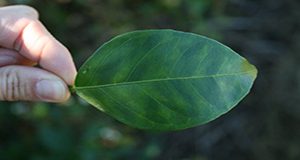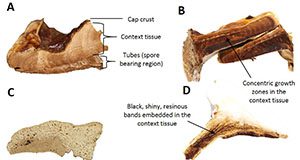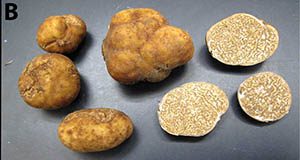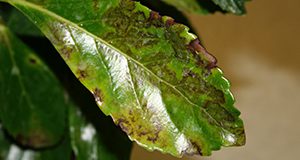Charcoal rot is caused by Macrophomina phaseolina and has become more prevalent in Florida strawberry fields since methyl bromide was phased out. This 4-page publication describes the symptoms, development, and control of charcoal rot in strawberry fields. Written by N. A. Peres, J. S. Baggio, and J. C. Mertely and published by the UF/IFAS Department of Plant Pathology, February 2018.
http://edis.ifas.ufl.edu/pp161
Tag: Department of Plant Pathology
Citrus Tree Care for the Home Gardener in the HLB Era
Since the early 2000s, growing citrus has become much more challenging due to plant disease pressure. HLB is the most devastating disease affecting Florida citrus, and threatens the survival of the citrus industry. This 4-page document describes citrus growth and care while managing the risk of an HLB infection. Written by Jamie D. Burrow, Tripti Vashisth, Megan Dewdney, and Brooke Moffis and published by the UF/IFAS Plant Pathology Department, November 2017.
http://edis.ifas.ufl.edu/pp336
The Laccate Ganoderma of the Southeastern United States: A Cosmopolitan and Important Genus of Wood Decay Fungi
Ganoderma Karst. is a large and diverse genus of wood decay fungi that can rot the roots and/or lower trunk of many tree species. There are several laccate (varnished or polished) Ganoderma species that are found in the southeastern United States and this six-page fact sheet provides an overview of the different species. Written by Andrew L. Loyd, Jason A. Smith, Brantlee S. Richter, Robert A. Blanchette, and Matthew E. Smith and published by the Plant Pathology Department.
http://edis.ifas.ufl.edu/pp333
Florida Citrus Activity Book
The Florida Citrus Activity Book is a basic introduction to Florida citrus trees, diseases, and pests. This 20-page booklet is for elementary students. Written by J.D. Burrow, M.M. Dewdney, M.E. Rogers, and T. Vashisth and published by the Plant Pathology Department.
http://edis.ifas.ufl.edu/pp331
The Pecan Truffle (Tuber lyonii): A Gourmet Truffle Native to the Southeastern United States
A truffle is a round, knobby, or lobed mushroom fruiting body that forms below ground. The “pecan truffle” (Tuber lyonii) is an edible truffle species, native to eastern North America. This fungus lives in a mutually beneficial relationship with the roots of some trees, including species of oak, hazelnut, and hickory trees, as well as the cultivated pecan tree. This four-page fact sheet describes the pecan truffle, its economic and culinary significance, morphology, and phenology and distribution. Written by Arthur C. Grupe II, Timothy Brenneman, Gregory Bonito, and Matthew E. Smith and published by the Plant Pathology Department.
http://edis.ifas.ufl.edu/pp330
Viburnum Downy Mildew
Downy mildew on viburnum is currently a serious concern throughout Florida. Winters in south Florida combine high humidity with cool nights, creating ideal conditions for disease development. Downy mildews are caused by several different species that tend to be host specific. Plasmopara vibruni is the pathogen that affects viburnum. This five-page fact sheet describes the hosts, symptoms, and management practices for Viburnum Downy Mildew.
Written by A. J. Palmateer and published by the Plant Pathology Department.
http://edis.ifas.ufl.edu/pp329
Huanglongbing (HLB; citrus greening) Leaf and Fruit Symptom Identification
Huanglongbing (HLB), commonly known as citrus greening, is a bacterial disease that affects all citrus varieties. This two-page fact sheet describes the leaf and fruit symptoms of HLB. Written by Jamie D. Burrow and Megan M. Dewdney and published by the Department of Plant Pathology.
http://edis.ifas.ufl.edu/pp327






